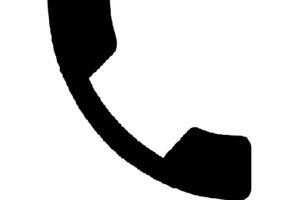Lost & Found Finder Using MERN React Application
The “Lost & Found Items Finder” is a MERN (MongoDB, Express.js, React.js, Node.js) stack-based web application designed to streamline the process of reporting and finding lost and found items. This platform allows users to register and login, post detailed reports of lost or found items, and search through existing entries to locate their belongings. Users can filter search results by category, location, and date to quickly find relevant items. The application enables users to claim found items by contacting the finder and submitting a formal claim request. Admins have the ability to monitor and manage the reported items, ensuring that the listings are appropriate and valid. They can also view user accounts and take necessary actions to maintain the platform’s integrity. The application includes a user feedback system, allowing users to share their experiences and suggest improvements. With a user-friendly interface and efficient backend management, the Lost & Found Items Finder application aims to provide a reliable solution for reuniting individuals with their lost belongings and assisting finders in returning found items.”Farmer Harvest Connect” is a comprehensive MERN Stack platform designed to facilitate the agricultural community in efficiently managing the process of hiring vehicles, manpower, and selling crops. This platform aims to bridge the gap between farmers, service providers, and buyers by offering robust features tailored to agricultural needs.Lost & Found Finder Using MERN Application
MERN React JS Software Languages
- Front End : React JS, CSS3, Bootstrap
- Back End : Express JS, Node JS,
- Data Base: Mongo DB
Tools:
- VS Studio
- Mongo DB
Modules List
Admin
– Login
– View User Accounts
– View Lost & Found Item
- Reject Items
– Logout
User
– Registration
– Login
– Post Lost Item
– Item details (name, category, description, location, date lost, image upload)
– Post Found Item
– Item details (name, category, description, location, date found, image upload)
– Search Items
– Filter by category, location, date
– View item details
– Claim Item
– Contact finder
– Submit claim request
– My claim request
– View My Posts
– Lost items posted
– Found items posted
– Update/Delete posts
– Post Feedback
– My Profile
– Update profile details
– Change password
– Logout
Modules Description
Admin
Login:Secure login functionality for admins to access the system.
View User Accounts:Admin can view details of all registered user accounts.
View Lost & Found Items:Admin can view all items reported as lost or found by users. Reject Items: Admin has the authority to reject inappropriate or invalid items from the list.
Logout:Secure logout functionality for admins to exit the system.
User
Registration:New users can create an account by providing necessary details.
Login: Registered users can log in to access their accounts.
Post Lost Item:Users can report lost items with comprehensive details.Item details: Name, category, description, location, date lost, image upload.
Post Found Item:Users can report found items with comprehensive details. Item details: Name, category, description, location, date found, image upload.
Search Items:Users can search for lost or found items using various filters.Filter by: Category, location, date.View item details: Detailed view of the item to help identify it.
Claim Item:Users can claim found items they believe to be theirs.Contact finder: Option to contact the person who found the item.Submit claim request: Formal request to claim the item.
My Claim Requests: Users can view the status of their submitted claim requests.
View My Posts:Users can manage their posts for lost and found items. Lost items posted: List of items the user has reported as lost.Found items posted: List of items the user has reported as found.Update/Delete posts: Option to update details or remove posts.
Post Feedback:Users can provide feedback about their experience using the platform.
My Profile: Users can manage their profile information.Update profile details: Modify personal information.Change password: Update account password.
Logout: Secure logout functionality for users to exit the system.
Existing System
The traditional method of managing lost and found items is predominantly manual and decentralized, often relying on bulletin boards, local advertisements, and word-of-mouth communication. In many institutions such as schools, universities, airports, and public transport systems, lost and found departments maintain physical logs or spreadsheets to record details of items that have been reported lost or found. Individuals who lose an item typically need to visit these places physically, fill out forms, and check periodically if their item has been found. Alternatively, some community websites and social media groups serve as informal platforms for reporting lost and found items, where users post details and photos hoping to reach a broad audience.
Disadvantages:
- Limited Reach and Accessibility: Physical lost and found offices are restricted by location, making it difficult for individuals who lose items in transit or across different regions to locate their belongings. Similarly, local bulletin boards and community groups have limited reach, failing to cover wider areas effectively.
- Inefficiency and Time-Consuming: The manual process of reporting and searching for lost items is often slow and inefficient. Individuals must repeatedly visit lost and found offices or check community posts, which can be time-consuming and frustrating.
- Data Management Issues: Physical logs and spreadsheets are prone to errors and can be difficult to manage, especially with a high volume of entries. There is also a risk of losing the logbooks or misplacing information, leading to inefficiencies in the system.
- Lack of Verification: Informal community platforms lack a proper verification process, making it difficult to ensure the legitimacy of the posts. This can lead to misunderstandings and misuse of the platform.
- Inadequate Search Functionality: Searching for specific items in physical logs or social media posts can be cumbersome. The lack of advanced search filters means individuals often have to sift through irrelevant information to find what they are looking for.
- No Centralized Database: There is no central repository for lost and found items, leading to fragmented information spread across various platforms and locations. This decentralization hinders the efficient retrieval and management of lost items.
Proposed System:
The proposed solution is a comprehensive Lost & Found Items Finder platform built using the MERN (MongoDB, Express.js, React.js, Node.js) stack. This web-based application aims to centralize the process of reporting, searching, and managing lost and found items, providing a streamlined and efficient way for users to connect with lost item reports and found item postings.
Advantages:
- Centralized Platform: By consolidating lost and found reports in one centralized platform, the system ensures a wider reach and easier access for users across different regions and communities.
- Efficiency and Convenience: The digital platform eliminates the need for physical visits to lost and found offices, saving time and effort for users. They can report and search for items from the comfort of their homes.
- Advanced Search Functionality: With robust search filters, users can quickly locate items based on specific criteria, reducing the time spent sifting through irrelevant information.
- Improved Data Management: The use of a database (MongoDB) ensures secure and efficient storage and retrieval of data. The digital records are less prone to errors and mismanagement compared to manual logs.
- Verification Process: The platform can incorporate verification steps for claim requests, ensuring that items are returned to their rightful owners and reducing the risk of fraud.
- User-Friendly Interface: Built with React.js, the platform offers a responsive and intuitive user interface, enhancing the user experience and making the process of reporting and searching for items straightforward.
- Scalability: The MERN stack provides a scalable solution that can handle a growing number of users and entries without compromising performance.
- Administrative Control: The admin module allows for effective oversight and management of the platform, ensuring that user-generated content is monitored and any inappropriate or fraudulent activity is addressed promptly.
The proposed system significantly enhances the efficiency, accessibility, and reliability of the lost and found process, offering a modern solution that benefits both individuals and organizations in managing lost and found items effectively.
Conclusion
The implementation of the Lost & Found Items Finder using the MERN stack represents a significant advancement in managing and reuniting lost items with their owners efficiently. This platform streamlines the process of reporting lost items, posting found items, and facilitating connections between owners and finders, all through a user-friendly web application interface. By leveraging MongoDB for data storage, Express.js for backend development, React.js for frontend interactivity, and Node.js for server-side operations, the system ensures robustness, scalability, and responsiveness.
Future Enhancements
- Mobile Application: Develop a mobile application version of the platform to extend accessibility, allowing users to report lost items and search for found items on the go.
- Real-Time Notifications: Implement real-time notifications to inform users about new postings of lost or found items matching their search criteria.
- Integration with Social Media: Enable users to share lost or found item posts directly on social media platforms to increase visibility and reach.
- Machine Learning for Matching: Integrate machine learning algorithms to improve the accuracy of matching lost items with found items based on descriptions and characteristics.
- Blockchain for Security: Explore the use of blockchain technology to enhance the security and transparency of transactions, particularly for high-value or sensitive items.
- Crowdsourcing Features: Incorporate crowdsourcing capabilities where users can enlist community help in locating lost items through incentives or rewards.
- Localized Alerts: Provide localized alerts and warnings about frequently lost items or high-risk areas for theft, enhancing proactive prevention measures.
- Enhanced User Profiles: Allow users to create detailed profiles with preferences, allowing for personalized recommendations and notifications based on their history and interests.
- Analytics Dashboard: Develop an analytics dashboard for administrators to monitor trends in lost and found items, user activity, and operational metrics to improve platform performance.
- Multi-Language Support: Implement multi-language support to cater to diverse user bases globally, facilitating broader adoption and usability.
These enhancements aim to elevate the Lost & Found Items Finder platform into a more comprehensive and proactive tool for users, enhancing user engagement, security, and overall effectiveness in reuniting lost items with their rightful owners.










